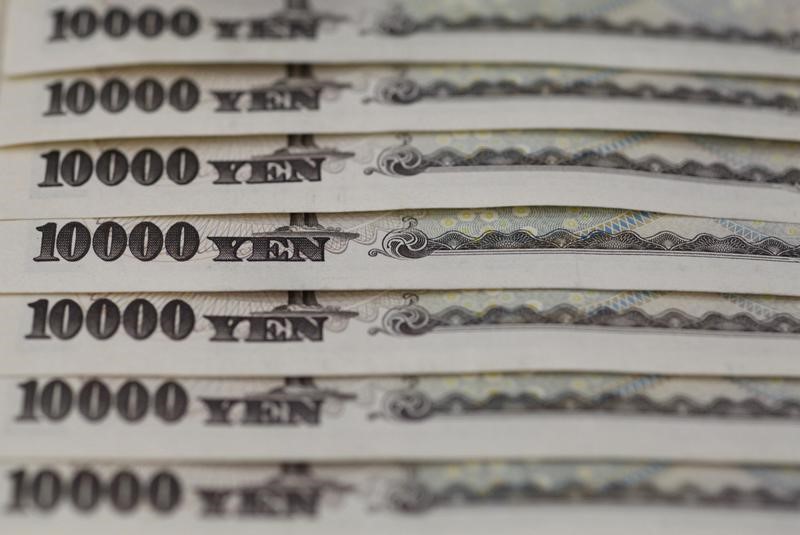Yen Shorts Crumble As 2022’s Hottest FX Trade Comes to an End
2022.08.08 03:01

Yen Shorts Crumble As 2022’s Hottest FX Trade Comes to an End
(Bloomberg) — The juiciest profits from betting against the yen — one of the hottest macro trades of 2022 — are a thing of the past, a growing cohort of strategists say.
Three key pillars of the sell-the-yen trade — a widening US-Japan interest-rate gap, soaring oil prices and the loss of the currency’s haven status — are crumbling as growing recessionary fears keep a cap on yields, put pressure on crude and send investors back into the arms of traditional safe assets. Dollar-yen, which soared 38% from a March 2020 trough to mid-July this year, is in retreat.
“The big yen short as we know it this year, it’s over,” said Rodrigo Catril, strategist at National Australia Bank Ltd. in Sydney. “Dollar-yen’s peak is now likely behind us.”
Catril is joined by the likes of Rabobank and Daiwa Securities Group Inc. in predicting a slowdown in losses for Japan’s currency, the worst performer in the Group of 10 this year. Strategists see the yen strengthening to 130 per dollar on average by the first quarter of 2023, according to data compiled by Bloomberg, a clear contrast with calls arguing that 140 and higher lay ahead at the peak of the bearishness in mid-July.
An end to what threatened to become the worst-ever drawdown for the currency would be welcomed by businesses to consumers to politicians in Japan, where higher import costs are weighing on a post-pandemic recovery. It would vindicate the resolutely dovish stance of Bank of Japan Governor Haruhiko Kuroda and put pressure on hedge funds who came late to popular short-yen macro strategies.
Treasuries Boost
Perhaps the most effective handbrake on the yen’s steep decline has been the pull back from ever higher Treasury yields.
The yen is closely correlated to movements in US government bonds as the dynamic of a BOJ keeping rates pinned to the floor even as the Federal Reserve hikes aggressively weighs on relative attractiveness of Japanese assets. Now Treasury yields have retreated from their highs as traders tweak estimates for peak Fed rates and reconsider bonds on fears of a US slowdown.
“US-Japan monetary policy divergence will no longer be a factor as markets have pretty much priced that in,” said Yukio Ishizuki, a senior currency strategist at Daiwa in Tokyo. “Yen selling appears to have peaked.”
Benchmark Treasury yields have fallen more than 60 basis points from their peak in June to 2.83% on Friday. The yen has strengthened over 3% from its trough to around 135.
“It follows that if US yields trend lower than some of the upward pressure is removed from the currency pair,” said Jane Foley, strategist at Rabobank in London. She sees dollar-yen trading as low as 130 in the coming months.
Energy Pressure
Japan, a net importer of oil, was left reeling earlier this year as Brent crude futures skyrocketed toward $140 a barrel. With prices now under the $100 mark, the devastating impact on import costs has eased.
Bloomberg Economics’ Yuki Masujima expects Japan’s trade deficit to have narrowed in July and the nation’s import bill to have increased at a slower pace thanks to cheaper commodity prices.
“The energy terms of trade shock is easing, particularly if you look at oil prices,” said NAB’s Catril. While a spike in gas prices and US 10-year bond yields would be key risks to watch, dollar-yen should trade around current levels before landing at 130, he said.
Haven Return
Japan’s currency is also making a comeback as a haven.
The yen jumped 1.3% last Monday when traders learned that US House Speaker Nancy Pelosi would visit Taiwan, sparking worries of potential retaliation from China. It has rallied more than 4% in the past three weeks as fears of a global recession deepened.
“The yen appears to have rediscovered its safe-haven status,” said David Forrester, senior FX strategist at Credit Agricole (OTC:CRARY) CIB in Hong Kong. Weaker-than-expected US economic data curbs Fed rate-hike bets, which “reduces the dollar’s safe-haven with high-yield appeal allowing the yen to reassert its safe-haven appeal,” he added.
Hedge funds appear to be voting with their feet. Leveraged investors have slashed their net-bearish yen wagers to the least since March 2021, recent data from the Commodity Futures Trading Commission showed.
Doubts Remain
To be sure, not everyone is betting the big yen short is over.
Dovish market expectations for longer-term Fed rates seem at odds with the central bank’s own hawkish view and stronger-than-expected US employment data Friday sent Treasury yields higher, a reminder that the pressure on bonds hasn’t completely eased.
While Goldman Sachs Group Inc (NYSE:GS). sees the yen rising over the long term, “further depreciation pressures are likely” as the BOJ clings to its yield-curve control policy during Kuroda’s term, strategist Isabella Rosenberg wrote in a note.
Others including Mizuho Securities Co.’s Masafumi Yamamoto said geopolitical risks don’t necessarily point to safe-haven yen buying, not least because a hypothetical US-China conflict could lead to American bases in Japan coming under attack.
“If tensions escalate seriously, it won’t be a one-way risk-off yen appreciation,” the Tokyo-based strategist said. “It’s a yen selling factor.”
But that’s not dissuading strategists like Foley who reckon the worst of the losses are in for the yen as jitters around monetary policy ease.
“Barring another sharp rise in US yields, the chances of seeing a move beyond 140 have now likely passed,” she said.
©2022 Bloomberg L.P.








